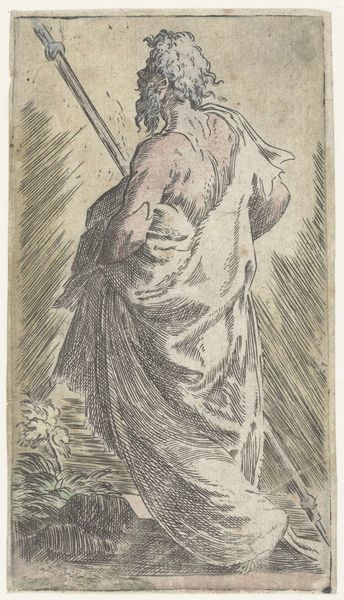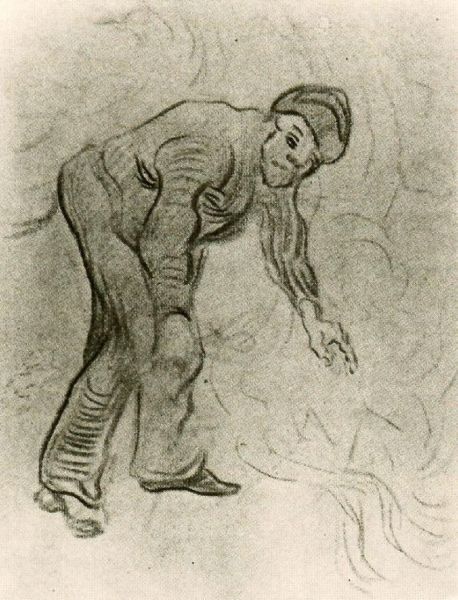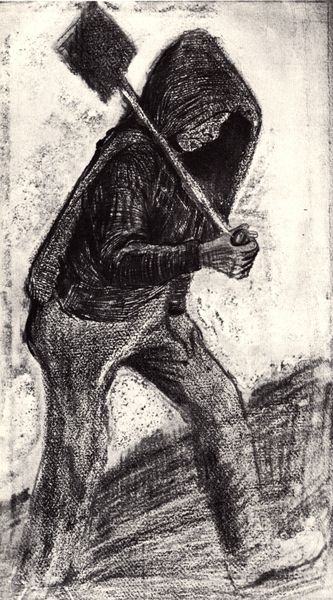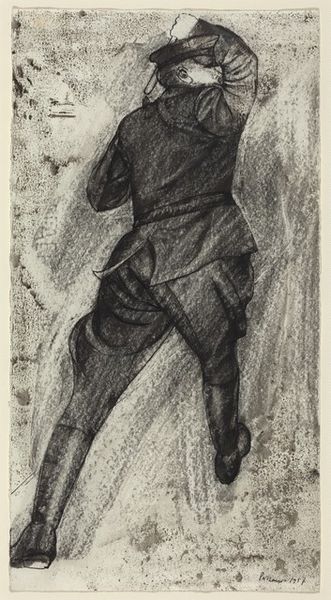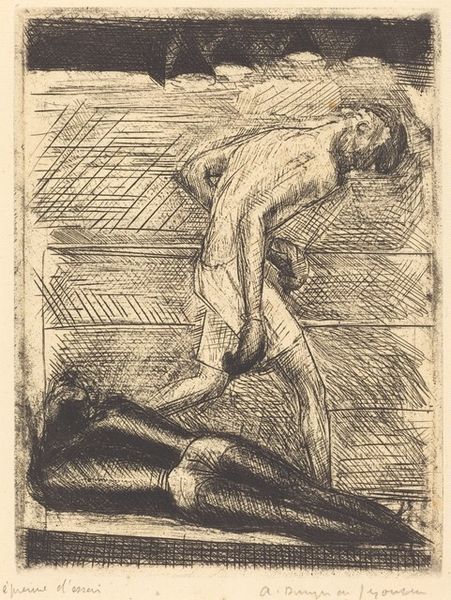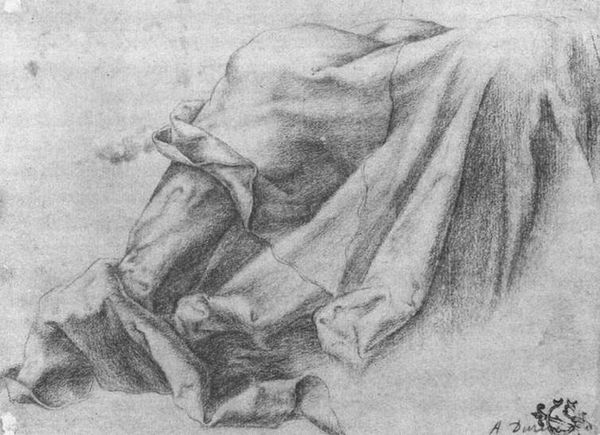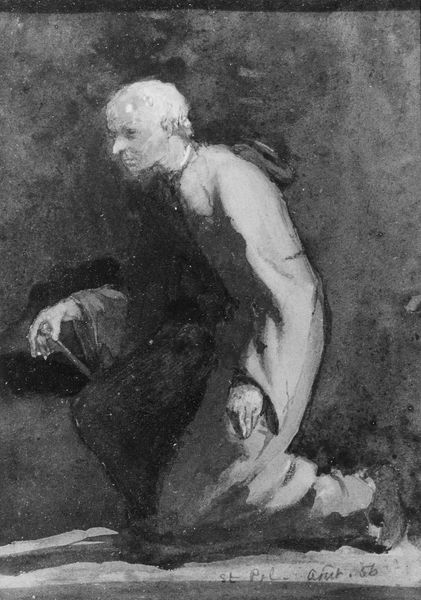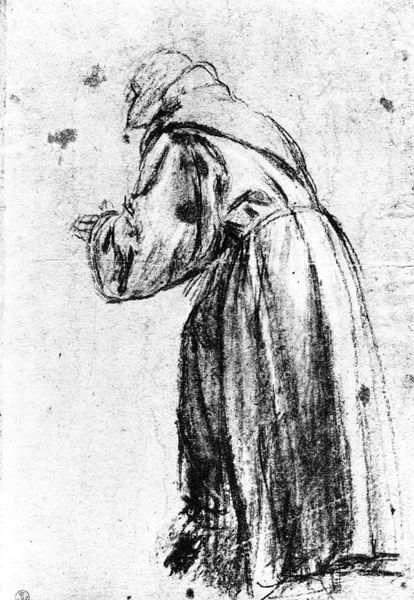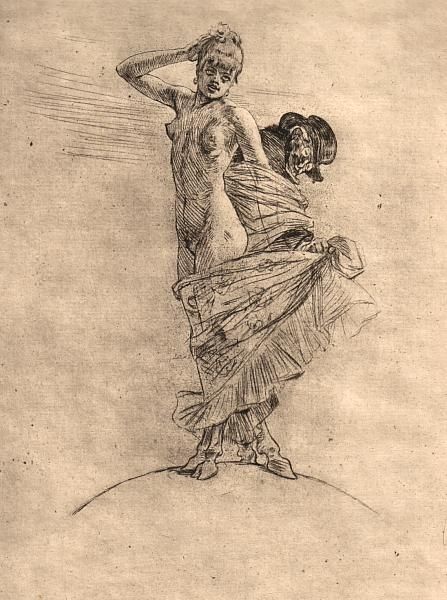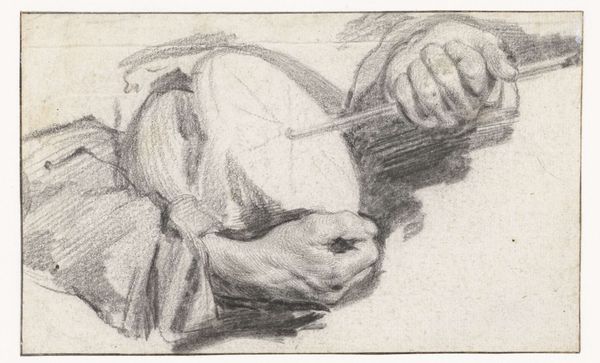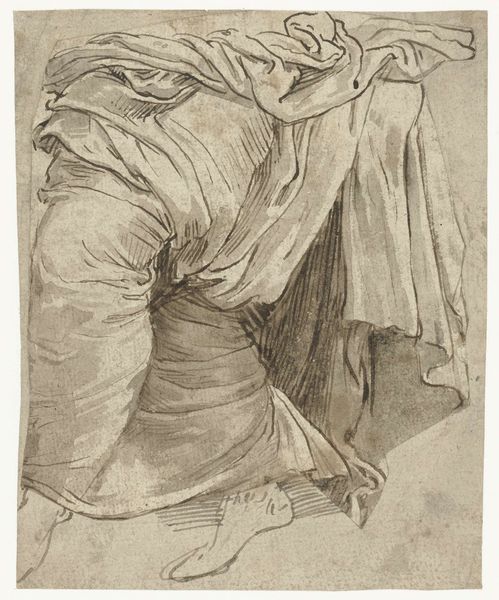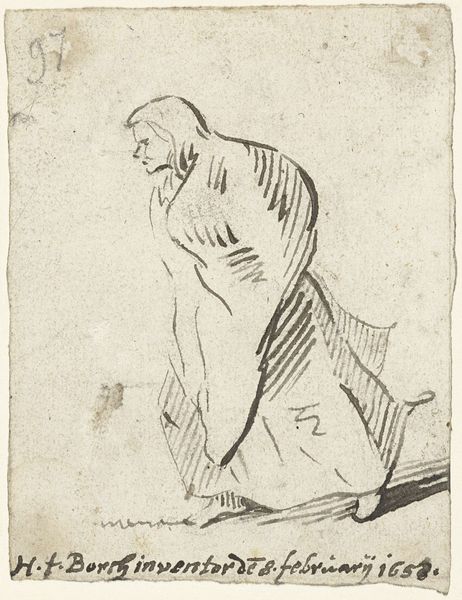
drawing, charcoal
#
portrait
#
drawing
#
charcoal drawing
#
figuration
#
portrait reference
#
sketch
#
romanticism
#
portrait drawing
#
charcoal
#
history-painting
Dimensions: 18.9 x 13.9 cm
Copyright: Public domain
Curator: Looking at this sketch, it's striking how much movement Goya manages to convey with such a spare use of line. There’s an almost unsettling levity to it. Editor: I agree! I’m drawn in by the image’s seemingly contradictory blend of mirth and something darker, something spectral. The castanets, traditionally symbols of joy and vivacity, feel almost frantic in the hands of this "Phantom." Curator: The image is indeed titled “Phantom Dancing with Castanets." Francisco Goya produced this charcoal drawing around 1828, near the end of his life while in self-imposed exile in France. The artwork is currently held at the Museo del Prado. Editor: Knowing it’s from his later period definitely colours my reading of the symbols. That traditional association of castanets with dance and celebration is flipped; they now hint at the dance of death, perhaps? Goya experienced so much political turmoil and illness throughout his life; did this work emerge from that turmoil? Curator: Undeniably, Goya’s life circumstances and evolving political landscape shaped his creative vision. While in exile after the restoration of the Bourbon monarchy in Spain, Goya felt deeply disillusioned with the sociopolitical currents of the era, so the Phantom could symbolize lost joy, lost power. But even then, it would be overly simplistic to say that he completely abandoned celebrating his cultural background and that of Spain. His depictions of bullfighting, for example, offer far less ambiguity. Editor: So you think he isn't abandoning imagery entirely but subtly repurposing traditional symbols. But even this "subtle repurposing" speaks volumes about his state of mind. Curator: It might indicate how artists and their critical portrayals of society's powerful components serve an essential public function. Goya understood, with unflinching vision, how symbols could simultaneously uplift and condemn, and his drawings especially hold important traces of such complicated relationships with symbols. Editor: That’s a great insight into Goya's genius; I am left contemplating the transient nature of joy and how easily it can transform into something haunting and spectral in a tumultuous environment. Curator: It makes us think of the ever-shifting role of art in the cultural landscape, and of what art may become through socio-historical forces, doesn't it?
Comments
No comments
Be the first to comment and join the conversation on the ultimate creative platform.
